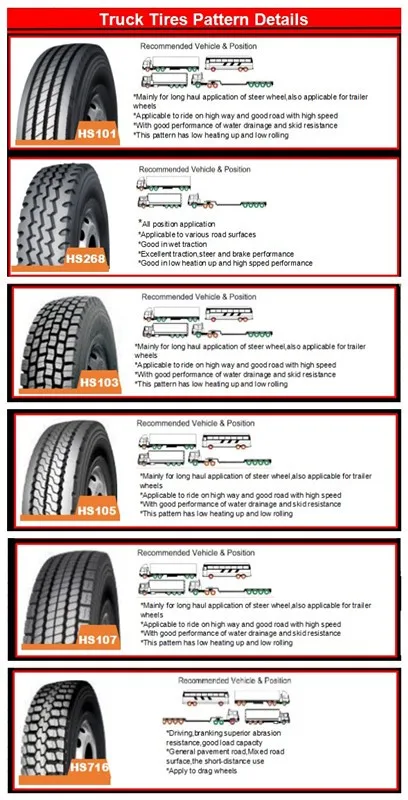Tire size can be confusing. Some numbers on the sidewall are listed in millimeters while others are inches. Plus, the right size for your car, truck, or trailer can differ depending on where and how you drive.
You can see your original equipment tire size in your owner’s manual or on the placard generally located on the driver’s side door jam. This is the sizing recommended by the vehicle manufacturer.
If you’re interested in switching out your tires for a different look or performance, a good place to start is the numbers and other indicators on your existing tires’ sidewall. Next, have a tire professional help you determine a tire size range that will fit your vehicle and driving needs.
Here’s what those numbers and indicators on the sidewall indicate and how to understand them:
A: TIRE TYPE The first letter in the code tells you what class of tire it is.
P stands for passenger vehicle tire. P-class tires include cars, SUVs, crossovers, minivans and smaller pickup trucks.
LT means light truck tire, designed for vehicles that are capable of carrying heavy loads, towing trailers, or for those looking for an extra heavy duty option. These are often equipped on three-quarter or 1 ton trucks and SUVs.
ST stands for Special Trailer. These tire sizes are meant for trailers, including fifth wheels and other travel trailers, as well as boat and utility trailers.
If there’s no letter before the first number, you have a metric tire most commonly referred to as European size. It’s also measured in millimeters but may have a different load capacity than a P or LT tire.
B: TIRE WIDTH The three-digit number following the letter is the tire’s width (from side to side, looking at the tire head on) in millimeters. This may also be referred to as the section width.
C: ASPECT RATIO The forward slash separates the tire width number from the two-digit aspect ratio. The bigger the aspect ratio, the higher/taller the tire’s sidewall, or “profile” as it’s sometimes called.
The aspect ratio is indicated on the tire sidewall as a percentage. It’s the height of the sidewall measured from wheel rim to top of the tread, expressed as a percentage of tire width.
In this example, the aspect ratio is 65, meaning the sidewall is 65 percent as high as the tire is wide. To get the sidewall height, take the tire width of 215 mm and convert it to inches (8.46). Then multiply this by 65% (.65). This gives you an answer of 5.5, the sidewall height in inches.
D: CONSTRUCTION TYPE This single letter tells you about the internal construction of the tire.
R is for radial tires, the industry standard for most tires today. They have better road grip, lower rolling resistance for better gas mileage, ride comfort and durability than previous generations of tires. In a radial tire, the plies — layers of strong cords made of a blend of polyester, steel and fabric and coated with rubber — are laid perpendicular to the direction of travel.
In a radial tire, the plies — layers of strong cords made of a blend of polyester, steel and fabric and coated with rubber — are laid perpendicular to the direction of travel.
D is for tires built with diagonal (crisscrossed) plies, called bias-constructed tires. They are also called conventional, x-ply, or cross-ply tires. Some motorcycle and trailer tires still use this internal construction.
Some run-flat tires are identified with an F followed by the type of internal construction.
E: WHEEL DIAMETER This two-digit number specifies wheel diameter in inches. It’s the distance between the two bead seat areas (where a tire gets tightly sealed onto the wheel).
F: LOAD INDEX The two-digit or three-digit number that follows the gap specifies tire load index. The load index symbol indicates how much weight a tire can support, based on the following standard chart. In our example, the load index is 89, which indicates the tire has a load capacity of 1,279 pounds, when inflated to the tire’s maximum air pressure rating.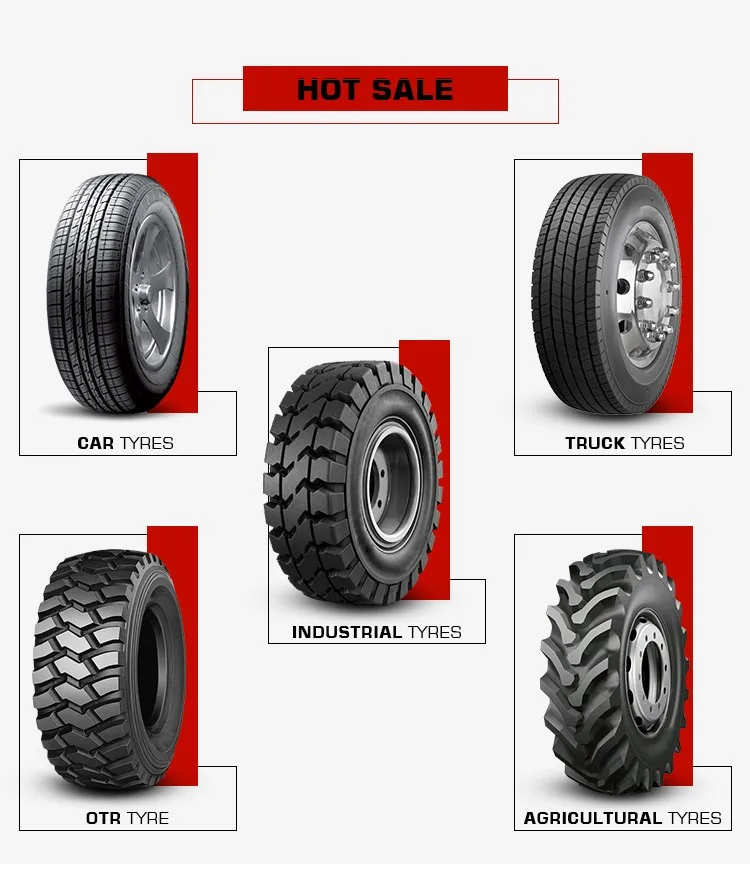
G: SPEED RATING The last letter is the tire speed rating. This indicates the top speed it’s safe to travel at for a sustained amount of time. A tire with a higher speed rating can handle heat better and provide more control at faster speeds. The maximum operating speed of a vehicle is no more than the lowest speed rating of all tires mounted on the vehicle. (Of course, you should always abide by speed limits for safer driving.) Speed rating is usually, but not always, a single letter (see the chart).
Below you will find several charts that will help you understand tire sizing numbers, including a load index chart and speed rating chart.
A tire size calculator is a quick way to see whether the tire size you’re considering will likely fit your car, SUV, sports car, light truck or crossover.
But remember that is only an estimate. It’s important to stay within the sizing tolerances of your vehicle. Tires that are the wrong size could cause some pull in the steering wheel, rub against the suspension or body of your vehicle, reduce clearance on hills, or result in a stiffer or noisier ride.
Tires that are the wrong size could cause some pull in the steering wheel, rub against the suspension or body of your vehicle, reduce clearance on hills, or result in a stiffer or noisier ride.
If you’re considering mounting a different tire size on your vehicle, check with a tire expert. Find out whether the tires and wheels you have your eye on are the right fit for your vehicle’s suspension, gearing, and bodywork. And ask how any differences in revolutions per mile, tire speed, load index, and speed rating will affect your ride quality and vehicle performance.
See how new tires and rims will look on your car or truck using our Virtual Wheels simulator, available at any Les Schwab.
Find Your Store
The three digits following the service type prefix (if present) tell us the cross-sectional width of the tire in millimeters.
In the example above, the tires width, measured from the widest point of the inner sidewall to the widest point of the outer sidewall when properly mounted, is 225 millimeters. The section width can be converted to inches by dividing the width in millimeters by 25.4 like so: (225 millimeters) / (25.4 mm/in) = 8.86 inches.
The two-digit number that usually follows the tire's section width tells us the aspect ratio, or tire profile measurement.
In this example, the 45 indicates that the sidewall distance, from the wheel rim to the outside of the tread, is 45% of the section width. A lower aspect ratio means a lower-profile tire with a shorter sidewall, while a tire with a higher aspect ratio will have a taller sidewall and look more like a donut. Because we know that the tire size shown in this example has a section width of 8.86 inches and the aspect ratio is 45%, the sidewall height for this tire is 3.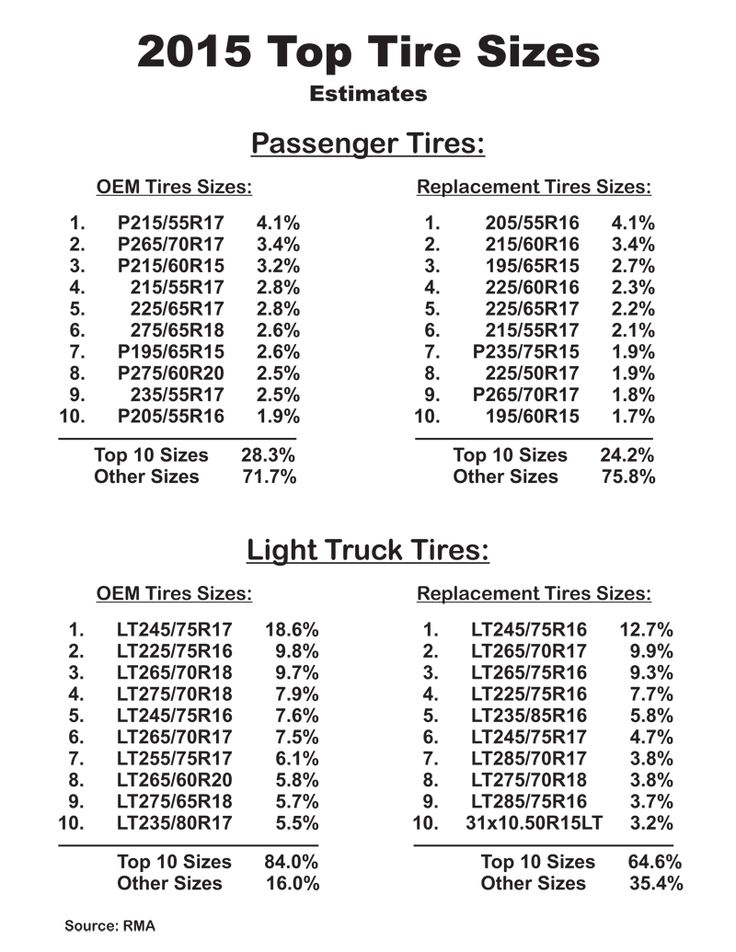 98 inches: (8.86 inches) x (.45) = 3.98 inches.
98 inches: (8.86 inches) x (.45) = 3.98 inches.
Again using our example tire size from above, the 17 means that the tire should be matched to a 17-inch diameter wheel.
Tires usually come in the following widths (in inches): 8, 10, 12, 13, 14, 15, 17, 18, 19, 20, 22, 23, 24, 26, and 28. Tires in these sizes are typically found on most passenger cars, light-duty light trucks, SUVs, minivans, and vans. Tires with a rim diameter measured in inches are called "inch rim" sizes.
In addition to the inch rim sizes, there are also some unique tire sizes out there. Although not as common, tires are made in half-inch diameters for some heavy-duty light trucks, box vans, and heavy-duty trailers. These sizes are usually 14.5, 15.5, 16.5, 17.5, and 19.5 inches, and an example would be 33x12.5R16.5 118R.
Tires and wheels with unique rim diameters should never be combined with traditional inch rim tires and wheels.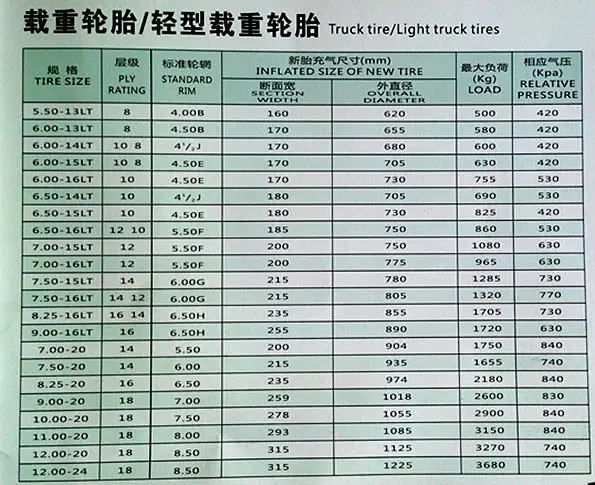 Before mounting tires on wheels, the tire and wheel diameters should always be confirmed to match.
Before mounting tires on wheels, the tire and wheel diameters should always be confirmed to match.
When a letter (R, D, or B) follows the two-digit aspect ratio, it tells us the tire's construction. In this example, the R means that the tire has radial construction. Over 98% of all tires sold today are radial tires, where the internal body plies of the tire radiate outward from the center. If there's a D instead of an R, the tire has a bias ply construction, meaning that the internal body plies of the tire crisscross on a diagonal pattern. In belted tires (marked as B), the internal plies crisscross like in a D construction, but there's also an extra layer of reinforcing belts under the tread area. Belted tires are rarely seen these days.
Today, the only speed rating still included in the tire size is the Z rating (sports cars). Since 1991, all other speed ratings are included in the service description, as shown below.
Since 1991, all other speed ratings are included in the service description, as shown below.
Since 1991, the service description rating is mandatory for all speed ratings (except Z-rated tires) and appears at the end of the tire's size brand. The service description is used to identify the tire's load index (91 in the example above) and speed rating (V in the example).
For more on load indexes and speed ratings, read Breaking the tire code: Understanding tire service description, load index, and speed rating
SHOP FOR TIRES
Nitrogen vs. air: Which is best?
It’s been a hot debate amongst tire nerds for years. We investigated and have the answer (sort of).
Original Equipment tires vs. replacement tires
Is it best to stick with your car's Original Equipment tires, or try something different? We’ll help you decide.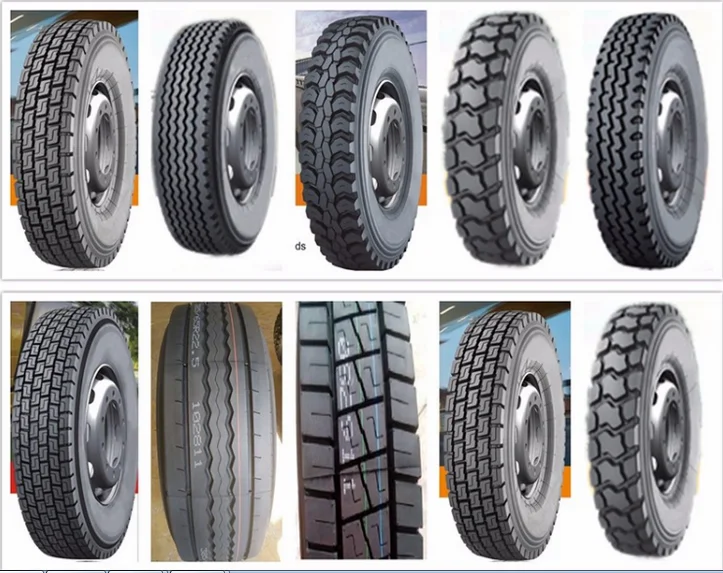
Your vehicle's trim/style
This is a pretty important bit of info when you’re buying tires. We’ll tell you how to find your trim level.
Choosing the right truck tires is essential to safe and trouble-free operation of your vehicle. Therefore, it is necessary to know how the features of the marking and designation of rubber. This will help you understand the nuances and choose the most suitable set of wheels for current operating conditions.
Contents:
marking indicating the required parameters.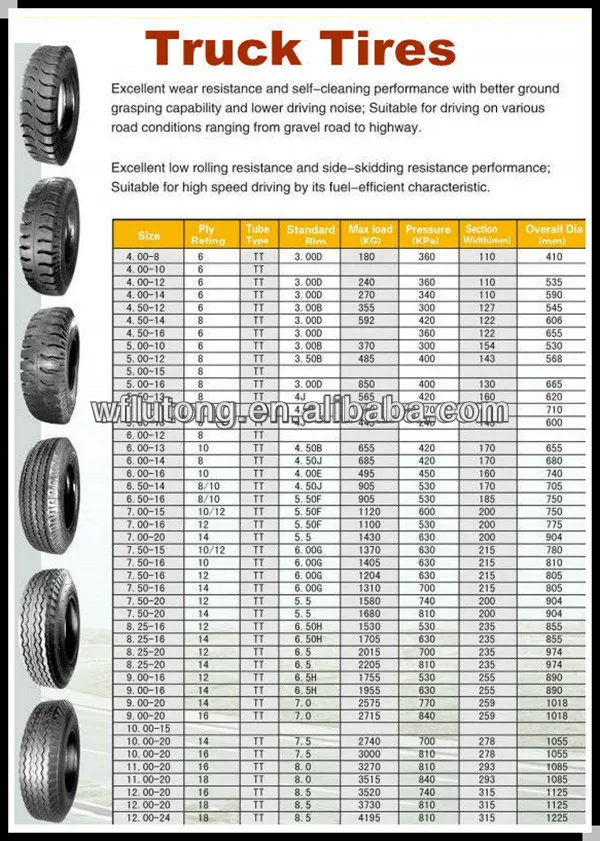 In order to understand the specification of rubber, you should read the letters on the sidewall of the wheel, located around the entire circumference. The name and logo of the manufacturer, the brand of rubber, the direction of rotation of the wheel, and the dimension of the product are printed in large letters.
In order to understand the specification of rubber, you should read the letters on the sidewall of the wheel, located around the entire circumference. The name and logo of the manufacturer, the brand of rubber, the direction of rotation of the wheel, and the dimension of the product are printed in large letters.
In the Russian market, in the marking of tires, European examples of dimension designation are most often found. For example, the standard size 286*75*R15 is decoded as follows:
As a rule, wheels for light vehicles are tubeless. This means that the rubber is simply put on the disc. Such products are labeled Tubeless. However, you can often find older models or domestically produced truck tires with TT (Tube Type) symbols. In the presence of this inscription, the tire is considered chambered.
The cameras themselves also have their own symbols. Their decoding is very simple - the first number indicates the width of the profile in inches, and the two digits at the end are the bore diameter. There may also be symbols indicating the scope of the camera:
Keep in mind that tube tires require special rims for tubes. Therefore, attention should be paid to their designation. Signs LK, GK or RK are deciphered as: cars with a camera, trucks with a camera, adjustable tube tire.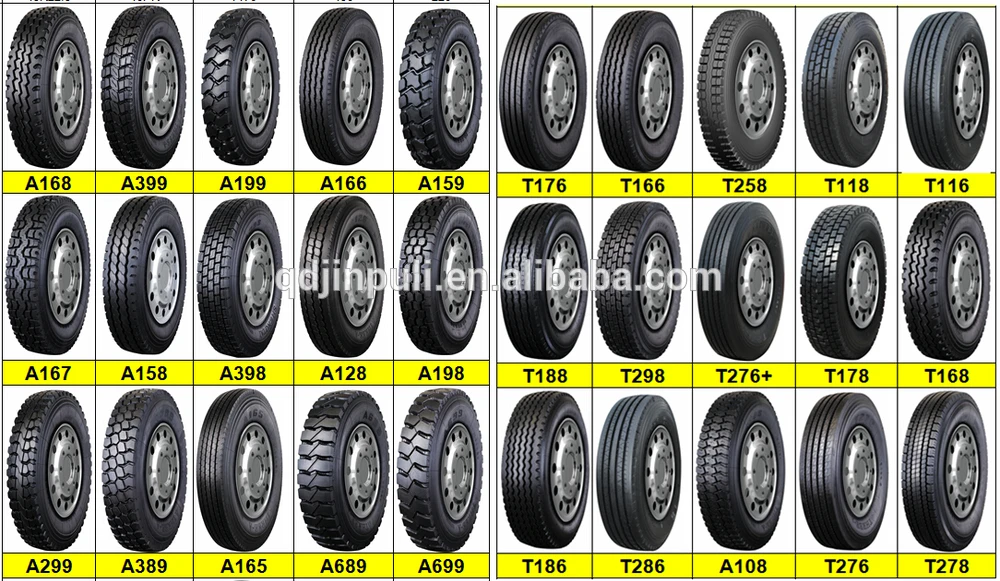 On the disks of this manufacturer, you can install chamber rubber.
On the disks of this manufacturer, you can install chamber rubber.
Sometimes cargo kits are installed using rim tape. It consists of durable elastic rubber and is worn under the tire itself. This allows you to better protect the sidewall from abrasion and damage to the cord on the surface of the disc.
The tape has its own marking consisting of two numbers. The first number is the band width and the second is the rim diameter. Sometimes two values are indicated in the marking of the rim tape for the wheel - in inches and millimeters for ease of use.
A complete list of compliance with the requirements of truck tires is described in GOST 5513-97. The document regulates all the standards for such tires and the required parameters. All markings must be on the outside. A height of 1.6 mm is the minimum indicator for a tire tread. When these indicators are reached, the kit must be replaced.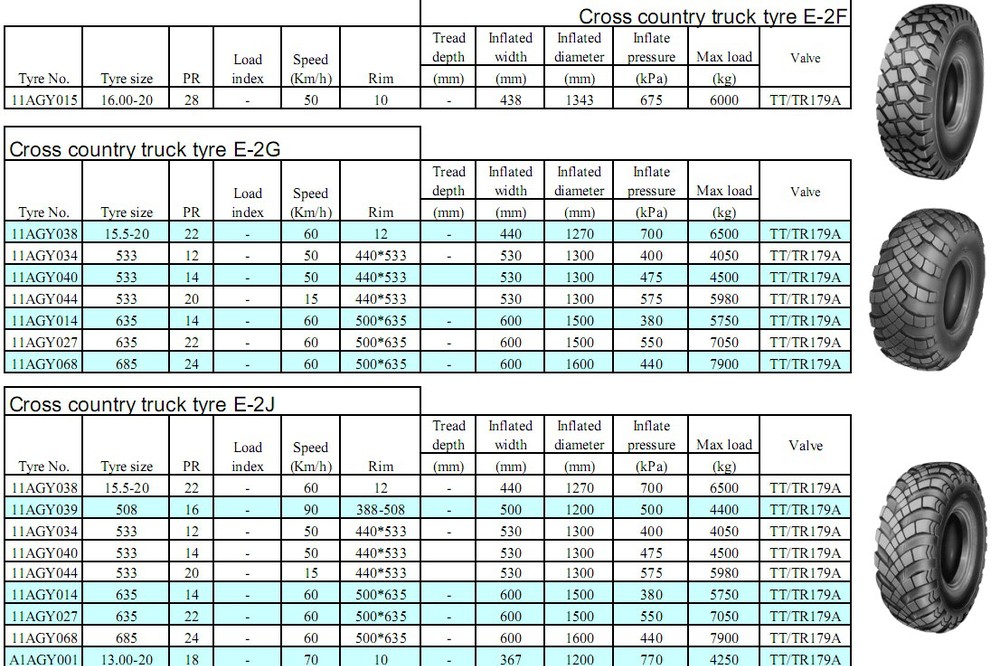 Winter tires have completely different standards - here the critical number is 2.5 mm of residual tread height.
Winter tires have completely different standards - here the critical number is 2.5 mm of residual tread height.
This document also regulates the ply rating of tires. Plying - the number of layers of cord on the sidewall of the rubber. For diagonal truck tires, the designation starts with 8 plies, and the maximum figure is 18. Radial wheels are more durable and modern.
Another important characteristic of truck tires is the maximum speed index at which you can continue driving. In the marking of truck tires, this indicator is indicated by the letter of the Latin alphabet. The closer it is to the end of the alphabet, the higher the speed category. Truck tires are produced with indices J, K, l, M, N, P, Q, R corresponding to speed indicators from 100 to 170 km/h in 10-point increments.
The load index for off-road and truck tires is indicated together with the speed category. These two numbers are adjacent to the maximum speed indicator.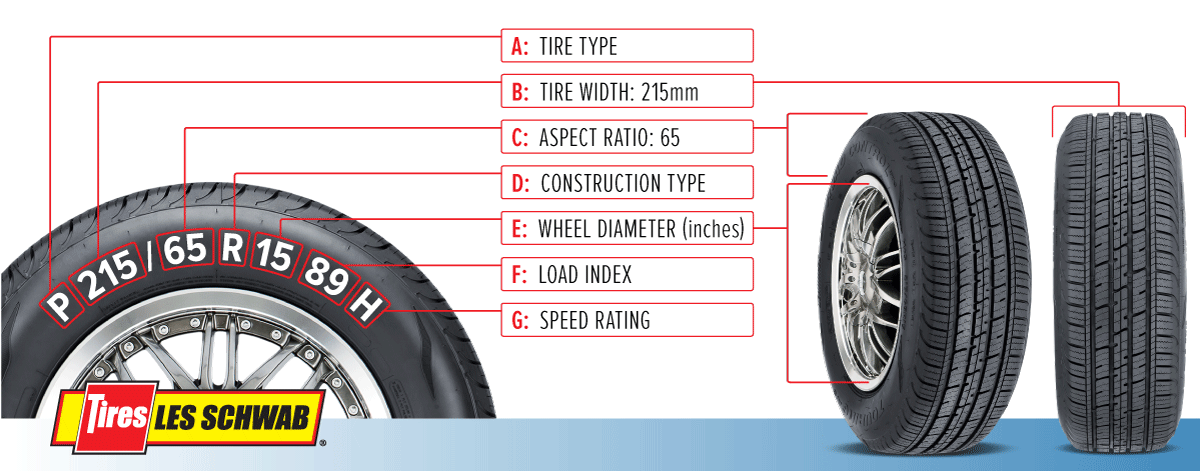 The higher this indicator, the greater the maximum allowable load on each wheel. This parameter is calculated at the maximum allowable tire pressure (kPa). This indicator is indicated on the sidewall of the tire.
The higher this indicator, the greater the maximum allowable load on each wheel. This parameter is calculated at the maximum allowable tire pressure (kPa). This indicator is indicated on the sidewall of the tire.
The minimum index for trucks is 119 for single wheels and 116 for twin wheels. If the letters EL or Reinforced are applied to the rubber, then this indicates a reinforced structure and an increased number of Radial layers. This inscription indicates that the load capacity of the wheel is 3 units higher.
| Tire markings | |
|---|---|
| Index | Maximum wheel load |
| 116-120 | 1250-1400 |
| 121-130 | 1450-1900 |
| 131-140 | 1950-2500 |
| 141-150 | 2575-3350 |
| 151-160 | 3450-4500 |
| 161-170 | 4625-6000 |
| 171-180 | 6150-8000 |
| 181-190 | 8250-10600 |
There are two markings for American tires. The first one is very similar to the European one, only letters are added in front of the standard size indicating the scope of the product. For example, P 195 60 * R17, in addition to the profile height and landing diameter, says that the tire is installed on passenger cars (P - passanger), and the letters LT or T indicate the cargo direction (Light Track, Track).
The first one is very similar to the European one, only letters are added in front of the standard size indicating the scope of the product. For example, P 195 60 * R17, in addition to the profile height and landing diameter, says that the tire is installed on passenger cars (P - passanger), and the letters LT or T indicate the cargo direction (Light Track, Track).
The second way to label light truck tires uses a different approach and inch system. If there are numbers on the product, for example, 30 * 10 * R16, then 30 is the outer diameter of the tire in inches, 10 is the tread width, and 16 is the diameter of the inner rim.
Sometimes there are color markings on the tire. This means that there are reinforced places in the tire design. These inhomogeneities are completely normal and are designed to facilitate editing on the disc and achieve balance.
The yellow triangle indicates the heaviest part of the tyre. Such a mark must be aligned with the letter L on the stamped disc itself.

The red dot marks the stiffest part of the wall and aligns with the same mark on the alloy wheel. Colored stripes or a white stamp with a number may also be present. The first ones help to find the necessary kit in the warehouse, and the second one gives information about the number of the inspector at the factory who evaluates the kit.
Some manufacturers add additional markings to their products. The production date is very common. It is expressed in four digits. The first indicate the serial number of the week, and the last two indicate the year of production. The date of manufacture with the following figures 1710 is the 17th week of the 10th year.
You can often see the sign Outside. Such rubber has an asymmetric tread pattern, and the badge should be directed outward. This will ensure that the kit behaves correctly under all conditions. If there is no such inscription on the sidewall of the tire, then it can be installed on any axle by any side.
Standard kits are designed for safe driving on normal surfaces. If you need improved cross-country performance, then you should take a set of size M + S. If these characters are deciphered for trucks, then they stand for Mud + Snow. Such wheels are considered all-weather and can provide good cross-country performance even when driving on muddy or snowy roads.
New cars > Tires >
Truck tires have their own special markings that allow them to be installed and used correctly. Deciphering them sometimes causes a lot of trouble. Tire sizes and indexes are not enough - see what you need to know about truck tire labels.
What should you know about truck tires?
Tire size, load factor and speed index are all located on the side of the wheel. Most often they take the following form: 315/70 R22.5 L 154/150.
Most often they take the following form: 315/70 R22.5 L 154/150.
What do the mysterious tire numbers mean? The first number is the width of the model, expressed in millimeters. The second is the profile height, defined as a percentage of the tire width. R is information about the radial structure and the number 22.5 is the rim size in inches.
The tire speed index in this case is "L" (the maximum speed you can drive at is 120 km/h). In this regard, truck and passenger car tire markings are the same, although, for example, the speed index H (up to 210 km/h) is not displayed on truck tires.
Truck tire load index is 154/150 (maximum load at maximum speed is 3750/3350 kg). The first indicator shows the load capacity for single tyres, and the second one for dual tyres.
Many truck models have the abbreviation FRT. This means "free rolling tyre", i.e. tires that are not suitable for installation on driven and front steered axles.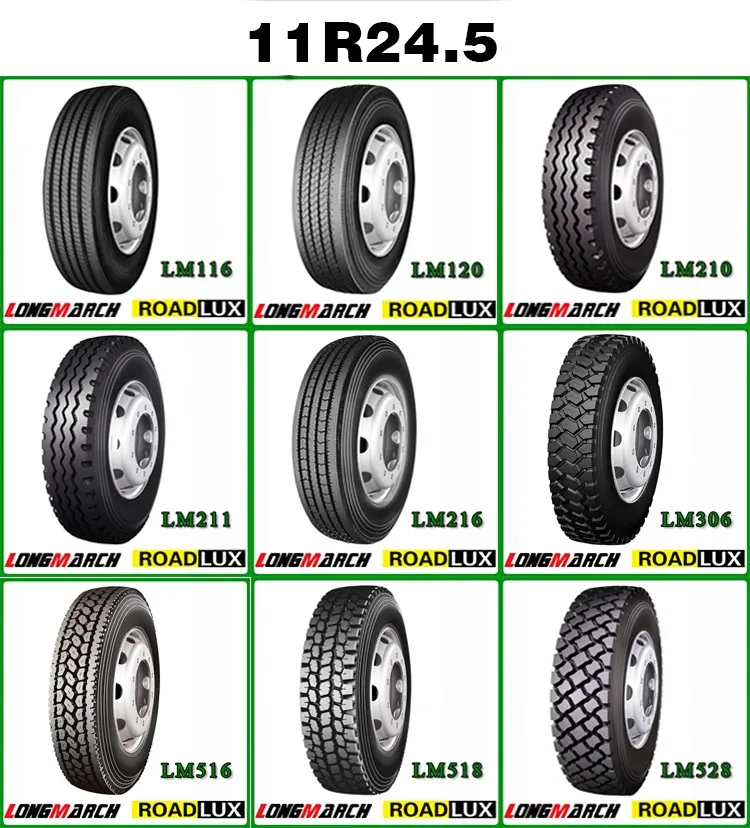 FRT tires for trucks are designed for installation on the axles of trailers and semi-trailers, as well as on any additional vehicle axles. They are characterized by an extremely robust construction (as evidenced by a higher load index). These types of tires are designed to withstand the enormous loads and overloads trailers are subjected to.
FRT tires for trucks are designed for installation on the axles of trailers and semi-trailers, as well as on any additional vehicle axles. They are characterized by an extremely robust construction (as evidenced by a higher load index). These types of tires are designed to withstand the enormous loads and overloads trailers are subjected to.
Knowing the label makes it easier to choose tires
Each manufacturer uses its own label, which is most often woven into the symbols and trade names of individual models from the offer. However, you can find certain rules in the decals associated with the vehicle axle.
Steering/drive axle tires are sometimes marked F or S ("front" or "steering"). There is also the letter "D", which says that we are dealing with tires on the drive axle ("drive"), and "T" is a trailer or semi-trailer ("trailer"). "Z" are usually universal models. Remember, however, that this is not an obligation and that the manufacturer may use his own individual marking! It is worth reading the product descriptions carefully and, in case of any doubt, contact the seller.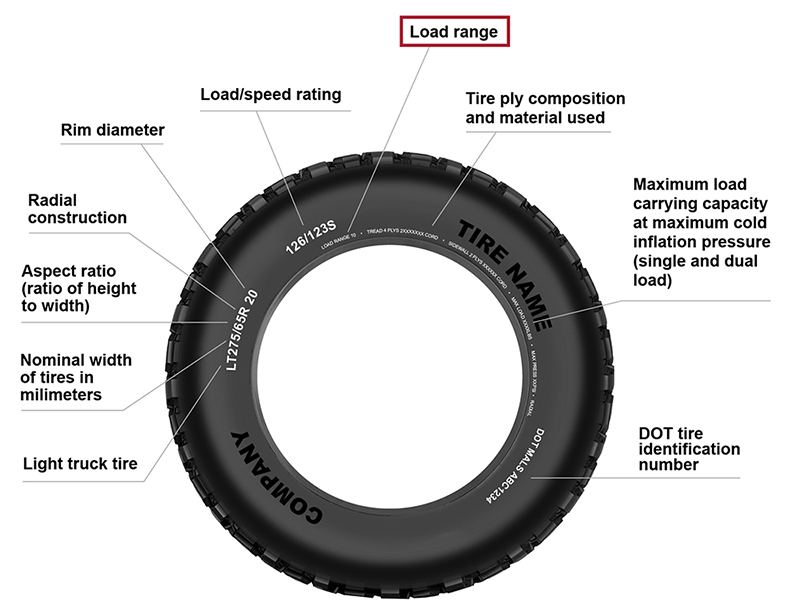
Examples of popular truck tires: Pirelli TR 01 (drive axle) Goodyear Kmax S (Z-axis steering), Goodyear Kmax D (drive axle) Bridgestone M729 (drive axle) Bridgestone L 355 (drive axle) Michelin XFN2 AS (axle leads). As you can see from the examples, these markings are common but not the rule.
The symbols M + S and 3PMSF are considered to mean almost the same thing. Many of our customers ask if the M + S (mud + snow) tire is suitable for the winter season. Unfortunately, it is not. The M + S marking is just a manufacturer's statement that the model will cope with a small amount of snow and fine mud. It is very common for truck tires to carry this marking - their design allows for variable weather and temperate climates even throughout the year (which is why all-season tires bear this marking). However, if we have to navigate in typical winter, difficult conditions (Northern Europe, high mountains, etc.), use 3PMSF (Three Peak Mountain Snowflake) winter tires.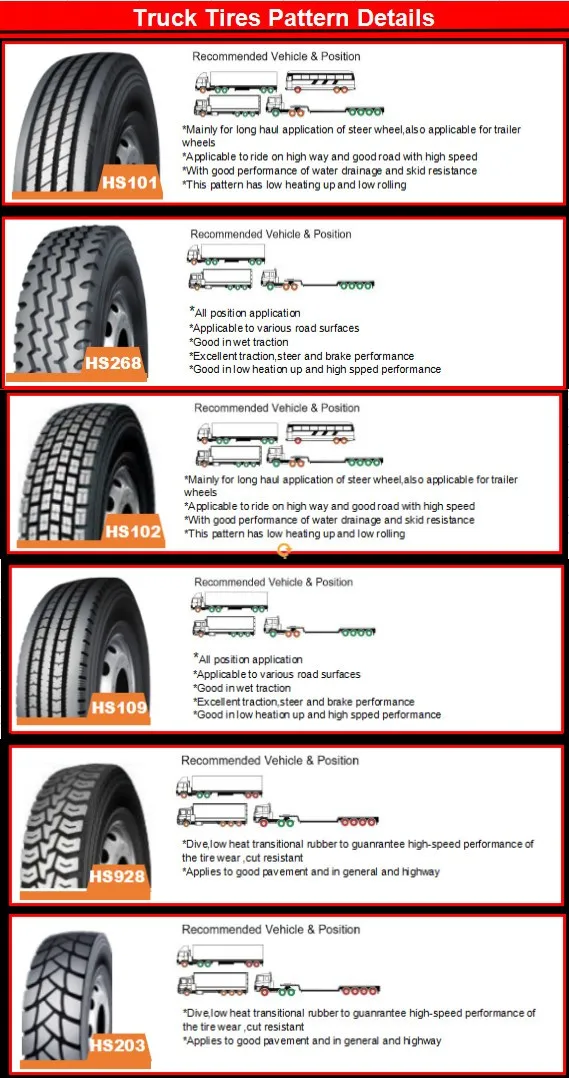
To receive this emblem, the tire must meet EU winter performance requirements. The properties guaranteed by the 3PMSF mark are especially important in the case of drive axle assemblies used in harsh winter conditions. In the Scandinavian countries and the Alps, 3PMSF tires can also be used on the steering axle. As a side note, it is worth mentioning that summer truck tires do not exist in practice.
You can read all the most important tire information from side
If you find such an inscription on a truck tire, it means that it is suitable for deepening the tread. This is an action that must be performed in a specialized, authorized service. Each manufacturer gives recommendations for deepening the tread. The cuts must have a certain width, and the depth must be carefully checked.
It is worth knowing that a damaged tread cannot be deepened because it does not have a uniform structure. Retreaded tires are a good option for those looking to save money, but they come with a few downsides - more susceptibility to damage or slightly worse performance. Unfortunately, such a compromise cannot be avoided.
Unfortunately, such a compromise cannot be avoided.
There are no significant differences between truck and passenger tires. The tread height of a new tire is about 8-10mm. The minimum tread value allowed by Polish law is 1.6 mm.
Reasonable, safe use of summer tires, when the depth is about at least 3 mm, and for winter tires at least 4 mm. Below these values, they lose their traction properties and become less reliable.
We decided to collect and explain the main designations for truck tires in one place:
DOT tires are a series of letters and numbers from which you can read the date of manufacture (the so-called year of manufacture of the tires). This is the English abbreviation for Department of Transport. The tire release date is the last four digits of the tire (week and year).
Place of manufacture is simply "Made in..." which makes it easy to read where a given tire was made.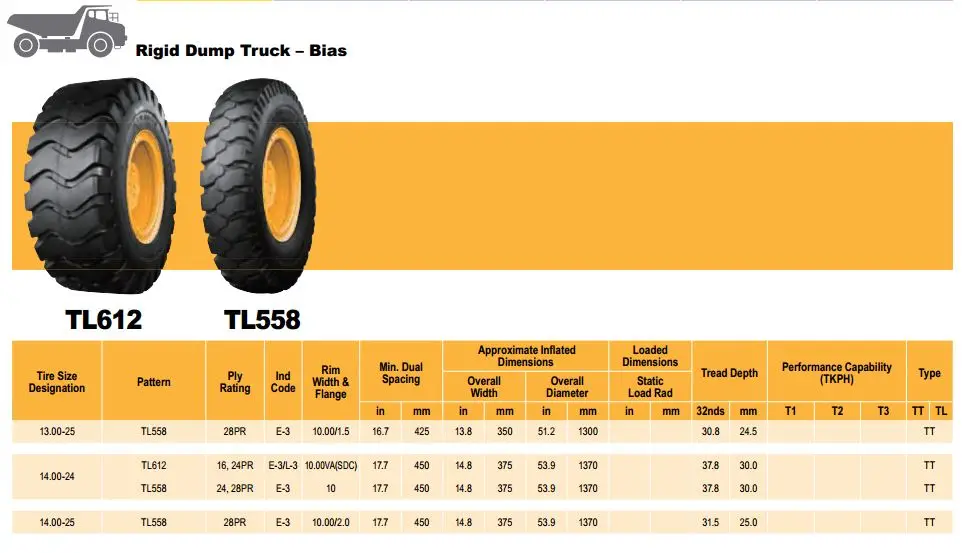
The rolling direction arrow indicates how to mount the tire on the rim so that it behaves correctly while driving.
Type of construction and components used, for example, R means radial tire, and the inscriptions STEEL , NYLON , POLYESTER are information that its belts contain elements made of this material or the same strength (some technologies are strictly protected by manufacturers' secrets).
The ECE approval mark is marked with the letter "E" or "e" and confirms compliance with the European standard (ECE-R30). The number next to the E is the code for the country that tested the product.
The inscription TUBELESS indicates that the tires are tubeless. Virtually all car tires these days are of this design (since around the 1970s). Tubular models are mainly used in bicycles, some motorcycles, and also in industry (they can be found in industrial trucks).
In turn, TWI is a tread wear indicator. Most often this occurs in the form of a block between the tread grooves, and when it is flush with their depth, this means that the tire is replaceable.